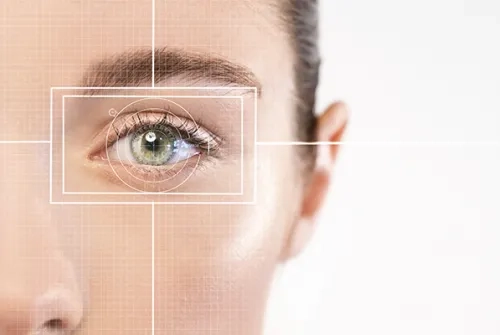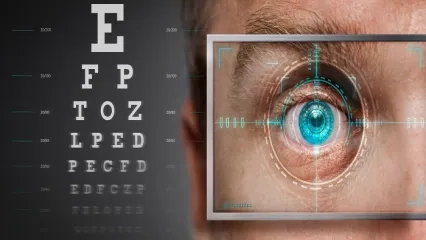Alo Yeditepe
Alo Yeditepe
Pay Attention to the Flashing Light in the Eye!
Prof. Dr. Sinan Tatlıpınar, Head of Yeditepe University Hospitals Department of Ophthalmology, explains...
How To Tell If There Is a Problem with the Retina?
There are some basic symptoms of retinal problems. Examples are decreased vision, loss of part of the visual field, seeing objects broken, seeing objects bigger or smaller than they are, flashes of light, and flying flies.
What Is Retinal Detachment?
Retinal detachment is the separation of the intact retinal layer from the eyeball to which it is attached. It is like wallpaper separating from the wall. Retinal cells cannot function in the detached retinal region. As the width of the separated area increases, the patient's vision loss increases. It can result in complete vision loss. It is common after the age of 50. What are the symptoms? Before retinal detachment develops, patients may describe flashes of light, flying flies, or oval-round shapes. For this reason, a detailed retinal examination should be performed, especially for people who have complaints of flashes of light and flying flies, and the presence of a tear or detachment in the retinal layer should be checked. HOW MANY TYPES DOES IT HAVE? Retinal detachment can be examined in 3 groups as rhegmatogenous, tractional, and exudative. The tractional one is the most common.
What Are the Causes of Retinal Detachment?
If the tears or perforations in the retina are not intervened promptly, retinal detachment will occur. The reasons can be listed as follows: Deterioration of the transparent gel-like substance (vitreous gel) inside the eye, congenital retinal thinning, advanced stage diabetic retinopathy, penetrating eye injuries, intraocular inflammations, vascular diseases, tumoral conditions, pregnancy, and high blood pressure.
Is Every Flash of Light in the Eye a Sign of a Problem?
Flashes of light that start suddenly and continue should be taken into consideration in terms of retinal tear development. Especially if there are accompanying flying flies, decreased vision, or narrowing of the visual field, the possibility of retinal tear and detachment is high. But sometimes the problem may just be the liquefaction of the jelly-like substance in our eyes. In such a picture, flashes of light in the form of 1-2 flash explosions occur intermittently, the patient may not have a tear. However, the retina should be examined in detail by enlarging the pupil, and it should be determined whether there is a tear. Sometimes migraine sufferers may also see luminous patterns similar to flashes of light.
Does Retinal Detachment Occur in One Eye?
It is usually unilateral. However, in those with high myopia and some genetic retinal diseases, detachment may also occur in the other eye.
How to Treat Retinal Detachment?
The treatment of rhegmatogenous and tractional retinal detachments is surgery. In exudative retinal detachments, cortisone treatment, radiotherapy, laser, or cryotherapy (freezing) are performed based on the underlying cause.
Can Retinal Detachment Be Prevented?
A retinal tear can be prevented if timely intervention is made. Laser is the gold standard in the presence of flying flies, retinal tears that can be manifested by flashes of light, or in some congenital retinal thinning cases. In the case of retinal tears, laser treatment surrounds the tear boundaries and prevents the tear from progressing into a retinal detachment. Thus, subsequent surgical intervention is prevented. In this respect, the effectiveness and protection of laser therapy are very satisfactory. In addition, laser treatment performed for congenital retinal thinning prevents future retinal tears from reaching dangerous levels long beforehand.
What are Retinal Diseases?
They can be examined in 4 main groups.
- Retinal Vascular Diseases: The most important one is diabetic retinopathy. In other words, the damage caused by diabetes to the back of the eye. Retinal vascular occlusions due to high blood pressure are also included in this group.
- Macular Diseases: The macula (yellow spot) is the densest region of visual cells in the retina. It is the retinal region that provides sharp and quality vision. The most important disease in this group is age-related macular degeneration. In other words, yellow spot disease.
- Hereditary Retinal Diseases: These are genetically transmitted diseases. The most important one is night blindness.
- Surgical Retinal Diseases: The most important disease in this group is retinal detachment.
About
Faculty and Year of Graduation:
Hacettepe, 1996
”
See Also
- Damages of Fake Sunglasses
- What is Cataract? Symptoms and Treatment
- Do not Risk Going Blind While Trying to Have Colored Eyes
- Get Your Child's Eye Examination Done Before They Go to School!
- Watch Out Blue Light Emitted By Devices For The Health of Your Eyes
- Pollen is Now Seen Outside of Seasonal Changes
- A Common But Little-Known Disease: Retinopathy of Prematurity (ROP)
- Medication Administration to the Eye
- Thyroid-Related Eye Diseases
- Glaucoma
- If You Have Diabetes, Consult An Ophthalmologist At Least Once A Year.
- It was Told that She could Lose Both Eyes, but She Recovered with an Operation
- Untreated Strabismus Can Cause Vision Problems!
- The Danger to the World: MYOPIA
- Eyelid Diseases
- Is Strabismus Genetic?
- One in 20 Newborns Have Tear Duct Obstruction
- Are Flies Flying Before Your Eyes?
- 7 Tips to Protect Your Eye Health
- Allergic Conjunctivitis (Eye Allergy)
- Eye Problems Increase as Children's Digital Screen Time Extends
Alo Yeditepe










